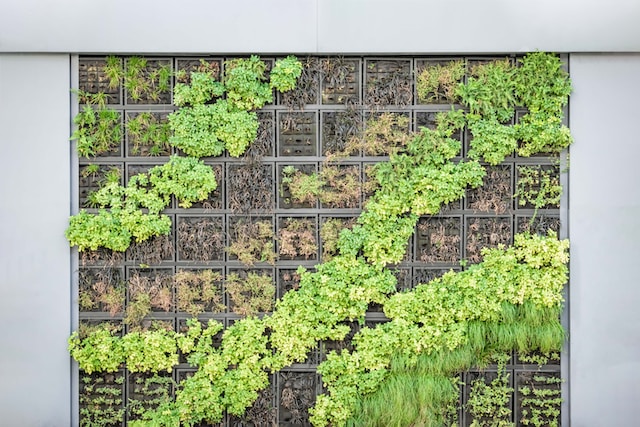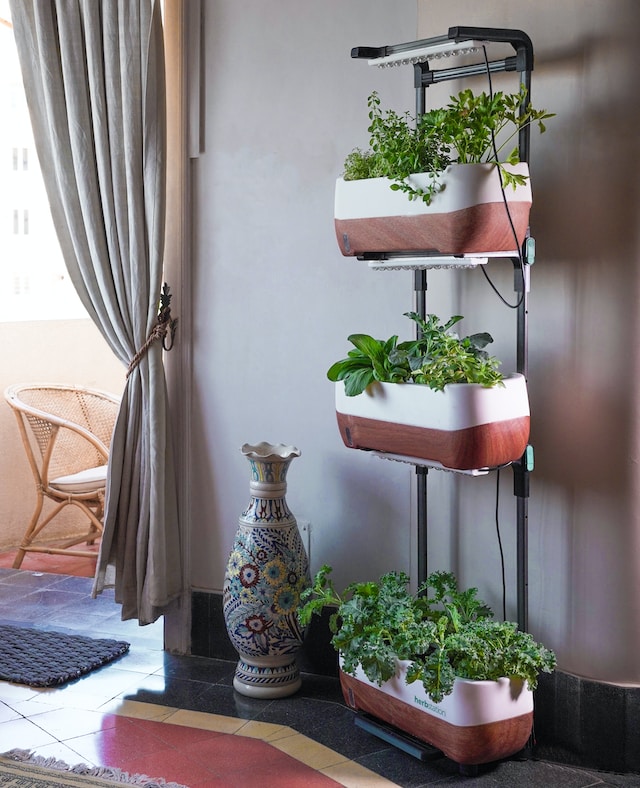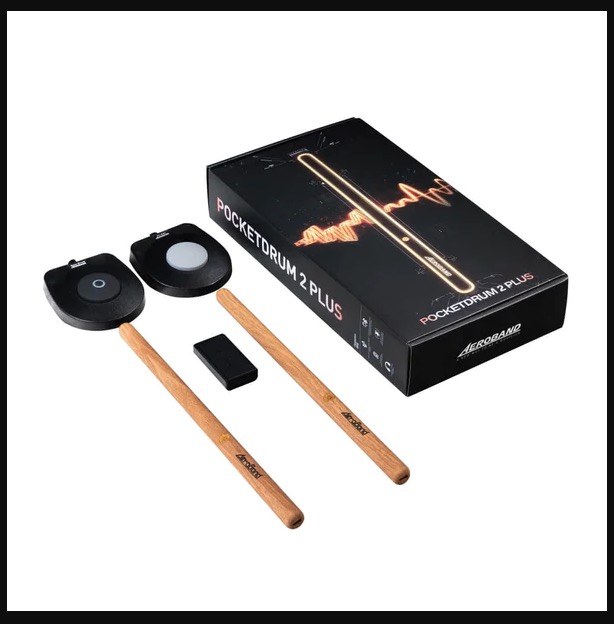Cover photo by Daniel Funes Fuentes on Unsplash
Today’s Focus of Attention is reader-supported. We sometimes include products we think are useful for our readers. If you buy through links on this page, we may earn a small commission.
Hello, green thumbs and aspiring gardeners!
Have you ever looked at a blank wall in your home, flat, or balcony and thought, “I could use that space to grow my own food.”
Well, you’ve come at the right time.
Welcome to the world of vertical gardens, where we take gardening to new heights.
What is a Vertical Garden?

A vertical garden, or ‘living wall’, is a garden that grows upwards using a wall or a standalone structure. It is like turning a traditional garden on its side and letting it climb up.
It transforms not only your walls into green canvases; it is also beneficial to grow your own food, purify your air, and make your space fresher and healthier.
Are you ready to dive in? Let’s crack on with your vertical adventure.
Choosing the Exact Place: It’s All About the Spot!
“Location, location, location,” said Lord Harold Samuel.
Before you assemble your masterpiece, choose the perfect location for your VG.
Take a moment to observe your chosen wall throughout the day. Does it get direct sunlight, or is it more shaded?
This is important because some plants love sunrays, while others prefer the veil of a nice cool shade. This helps you decide which flowers, vegetables, or herbs will thrive there.
Another factor is wind. A breezy corner is perfect but be careful if your spot is a wind tunnel since it dries your plants and damages them.
If you have no alternative, add some windbreaks or choose more robust plants.
The last point is accessibility. Bear in mind that you need to water, prune, and pamper your plants, so make sure your garden is easy to reach.
Selecting the Ideal Plants: Meet Your New Green Friends

Now that you have the perfect location, pick your plants.
But remember, not all of them are suitable for vertical gardening. A few might require specific soil types (pH levels) or be inadequate for the climate you live in.
For a sunny spot, plant succulents (Sedum, Echeveria, Aloe), flowering plants (Petunias, Marigolds, Geraniums), or ornamental grasses (Blue Fescue, Fountain Grass).
On the other hand, if you want edibles, choose tomatoes, peppers, strawberries, basil, rosemary, lettuce, and spinach.
These plants will soak up the rays while giving your garden a colourful display.
For a shadier location, you have these options: ferns (Boston, Maidenhair, Staghorn), ivies (English, Algerian, Creeping Jenny), hostas, and foliage plants (Pothos, Philodendron, Peace Lily).
About edibles, pick mint, parsley, chives, kale, rocket (arugula), and coriander.
If your place has chilly winters, be prepared to bring your plants inside. Just in case they can’t handle the cold weather.
Design: Crafting Your Green Canvas
Your vertical garden is a living blend of art and science. Combine different textures and colours for a dynamic and eye-catching display.
Let’s dive into the steps to creating a captivating green farm:
1- Pre-planning: The Blueprint of Your Garden
Sketching: Draw a sketch of your wall or structure to visualise the area.
Measuring: With a tape measure, get the dimensions of your space to decide how many plants and planters you’ll need.
2- Themes and Aesthetics: Setting the Mood
Colour Coordination: Would it be monochromatic or a burst of varied hues?
Plant Sizes: Mix and match different shapes and forms for depth and texture. Larger plants serve as focal points, while smaller ones fill in gaps.
Textures: For instance, ferns add softness; succulents bring a chunky texture; and vines introduce flow and movement.
3- Layout: Positioning Your Greenery
Vertical Arrangement: Do you want your plants to be evenly arranged? Or more like an organic, random placement?
Horizontal Arrangement: For a striking effect, contrast with different shapes and hues.
4- Functional Considerations: Beyond Beauty
Accessibility: Make sure every plant is reachable for watering, pruning, and general care.
Growth Patterns: Consider that some plants grow upwards, while others cascade down or just spread out. Locate them so that they can flourish without crowding their neighbours.
5- Planters and Structures: The Framework
Choose the Right Containers: Pick what suits your design and functionality, from pocket planters and pots to modular systems.
Structural Integrity: Verify that your wall or structure bears the weight of the planters, soil, and plants. Install more supports or brackets if required.
6- Final Design: The Last Look
Review: Take a step back. Does it feel balanced? Are colours and textures showing a good mix?
Adjust: If the VG doesn’t align with your vision, tweak your design. Move, include, or remove elements.
Materials and Tools: Building Your Vertical Oasis

To create your VG, you need more than plants and enthusiasm. It’s crucial to rely on the best resources and instruments at hand to guarantee your garden not only looks great but also endures the test of time.
Here are the basics:
1- Vertical Structures: The Backbone of Your Garden
Wall Planters: These are containers that are attached to walls.
Pocket Gardens: Made of breathable fabric, these pockets are hung and filled with soil and plants. If you wish a dense display, they are the best choice.
Trellises: These wooden, metallic, or plastic latticed structures support climbing plants.
Modular Systems: These are interlocking panels or boxes that fit any space.
2- Essential Equipment: Your Gardening Arsenal
Gloves: They protect your hands from water, soil, and any sharp tools.
Trowel: This small hand tool is ideal for adding potting mix to planters and cultivating petite plants.
Pruning Shears: Use them for trimming and maintenance. They keep your plants healthy and well-shaped.
Watering Can or Hose with a Fine Spray: Essential for hydrating, a fine spray is gentle and prevents erosion.
Spirit Level: It ensures your planters and/or structures are hung straight.
Drill and Screws (or Hooks): They are made for attaching your system to walls. Pick the right ones for your wall type.
Soil Scoop: Handy for transferring soil into planters without making a mess.
3- Soil and Fertilisers: Nourishment for Your Plants
Potting Mix: Buy a well-draining soil mix to prevent root rot. Some mixes are formulated for vertical gardens.
Organic Fertilisers: They give essential nutrients. For easy application, consider slow-release granules or liquid ones.
Mulch: It helps keep soil moist and prevents weed growth. The most popular choices are coconut coir or bark chips.
4- Irrigation Supplies: Quenching Your Garden’s Thirst
Drip Irrigation System: This structure delivers a steady supply of water, ensuring consistent wetness.
Water Reservoirs: Useful for storing water.
Hose and Connectors: Essential to connecting your water source to your network.

A virtual and portable drumming solution…
Installation Process: Bringing Your Vertical Garden to Life
A VG is a rewarding experience. But it’s vital to follow the correct procedure to have your garden thrive.
1- Preparing the Wall: A Strong Foundation
Cleaning: Clean the wall to remove any moss, dirt, or debris. A simple wash with soapy water and a scrub brush will do the job.
Inspecting: Repair any cracks or damages to resist the load of the garden.
Waterproofing: Consider adding a waterproof barrier, like a plastic sheet, to protect the wall from moisture.
2- Marking and Measuring: Precision is Key
Layout: With your design as a guide, mark where each planter will go.
Height Considerations: Check that the lowest plants are above ground level to prevent water splashing and that the highest ones are within easy reach for maintenance.
3- Installing the Structure: Securing Your Garden
Drilling: Drill holes where you’ve marked them and put in the right plugs or anchors for your wall type.
Hanging: Attach your chosen structure.
Checking Alignment: To confirm everything is straight, use a spirit level.
4- Planting: Introducing Plants to Their New Home
Soil First: Fill the containers with the recommended potting mix. Leave some room at the top.
Plant Placement: Remove plants from their nursery pots. Then gently tease out the roots and put them in the containers.
Topping Up: Add more soil around the plants, applying a light touch to get rid of air pockets. The plants should have a firm grounding.
5- Setting Up Irrigation: Keeping Things Hydrated
Drip System: Install and place the hoses or tubes so that each plant receives water.
Water Reservoirs: For modular systems with built-in reservoirs, verify they are connected and filled.
Manual Watering: If you’re irrigating by hand, give every plant a good drink to help them settle in.
6- Final Touches: Perfecting Your Garden
Mulching: A layer of mulch at the top of the soil keeps moisture in and deters weeds.
Pruning: To encourage healthy growth, trim any damaged or overly long parts.
Labelling: Consider labels if you’re growing a variety of plants.
Once you finish, admire your work.
Maintenance: Nurturing Your Vertical Oasis
Your garden requires love and attention. Proper care helps your plants stay healthy, vibrant, and continue to thrive.
1- Watering: Quenching the Thirst
Frequency: It depends on the type of plant, climate, and season. For example, succulents might need less water, but leafy greens require more frequent hydration.
Method: With a drip irrigation system, set a schedule to keep the soil moist but not waterlogged. For manual watering, use a can with a long spout or a hose with a gentle spray setting to reach all plants.
Monitoring: Check the soil often. If it feels dry an inch below the surface, it’s time to water.
2- Fertilisation: Feeding Your Green Friends
Type: For edible plants, organic fertilisers are better. On the flip side, ornamental plants take both organic and chemical fertilisers.
Frequency: Slow-release granules are applied about four times a year, whereas liquid fertilisers after a few weeks. Follow the manufacturer’s instructions.
Application: Ensure even distribution. For liquid fertilisers, dilute as instructed and water the plants with the solution.
3- Pruning and Trimming: Keeping Things Tidy
Regular Checks: Inspect your plants for overgrowth, dead leaves, or branches.
Trimming: Cut back any overgrown areas with pruning shears.
Deadheading: Remove spent flowers to bring in new blooms.

4- Pest and Disease Management: Protecting Your Plants
Constant Inspection: Aphids, spider mites, or mealy bugs threaten your garden. Look for discoloured or spotted leaves.
Natural Solutions: Consider using predators like ladybugs for aphids. For pests and fungal diseases, neem oil is a convenient solution.
Chemical Solutions: If infestations are severe, resort to pesticides or fungicides, but keep them away from edible plants. Follow the manufacturer’s instructions.
5- Rotation: A Change of Scenery
Periodic Movements: Consider rotating plants so all sides receive equal light exposure. This promotes even growth.
Replacement: If a plant isn’t thriving in its current spot, replace it with a more suitable variety or move to a different location.
6- Seasonal Care: Adapting to Change
Winter Protection: Some plants cannot withstand frost. Use special cloths for protection or take the delicate ones indoors.
Summer Attention: In this weather, plants must be well-watered and protected from intense midday sun. Shade cloths help reduce exposure.
Troubleshooting Common Issues: Keeping Your Vertical Garden Thriving
All gardens, vertical or otherwise, will face their share of challenges. But fear not!
Here’s a short guide to tackling typical problems:
1- Diseases: Guard against sickness
Fungal Infections: They manifest as black, white, or brown spots on leaves. Solution: Good air circulation. Remove the affected leaves and treat with a fungicide or neem oil.
Root Rot: Caused by overwatering, it leads to yellowing leaves and wilting. Solution: Reduce hydration frequency, secure proper discharge, and consider repotting plants in fresh soil.
2- Watering Woes: Striking the Right Balance
Overwatering: Leaves turn yellow or brown, and the ground remains wet. Solution: Cut back on watering, drain the excess liquids, and let the soil dry out between irrigating sessions.
Underwatering: The soil is parched, and leaves wilt or drop. Solution: Increase sprinkling frequency and set up a drip irrigation system for consistent moisture.
3- Light Issues: Too Much or Too Little
Too Much Sun: Leaves may get scorched, bleached, or crispy. Solution: Put up a shade cloth during peak sunlight hours or move plants that prefer indirect daylight.
Too Little Sun: Plants become leggy, with elongated stems and fewer leaves. Solution: Rotate plants so that they receive enough light or connect supplemental lighting.
4- Structural Problems: Holding It All Together
Sagging or Leaning Planters: Over time, growing plants may sag planters. Solution: Tighten fixtures or include other supports or brackets.
Drainage Issues: Water pools at the base of planters or gushes out from the bottom. Solution: Be sure that the containers have exit holes. With pocket gardens, verify that the fabric is not clogged and can drain without difficulty.
5- Growth Challenges: Ensuring Healthy Development
Stunted Growth: Plants are not growing as expected. Solution: Check for enough sunlight, water, and nutrients. Also, think about repotting those that have outgrown their containers.
Uneven Growth: One side of the plant grows more than the other. Solution: Switch the position to ensure even light exposure.
Benefits of Vertical Gardening: More Than Just a Pretty Wall
Apart from being eye-catching, VGs offer a plethora of rewards that go beyond aesthetics.
Let’s delve into the myriad advantages of taking your garden to new heights:
1- Space Efficiency: Maximising Limited Areas
Urban Solutions: For city dwellers, vertical gardens offer a green haven without expansive ground areas.
Room for More: By growing upwards, you turn even the smallest balcony or patio into a lush sanctuary.
2- Environmental Benefits: Giving Back to Mother Nature
Air Purification: Plants filter and purify indoor air, removing toxins and releasing fresh oxygen.
Temperature Regulation: Living walls act as natural insulators. They reduce your carbon footprint as they minimise the need for air conditioning in the summer and heating in the winter.
Biodiversity Boost: Vertical gardens attract beneficial insects, birds, and pollinators.
3- Psychological and Health Perks: A Dose of Green Goodness
Mental Well-being: Being around plants reduces stress, anxiety, and depression. Gardening itself is therapeutic and offers a sense of accomplishment.
Improved Concentration: Studies suggest that natural spaces enhance memory and cognitive abilities.
Physical Health: Gardening activities promote exercise, improving flexibility and strength.
4- Aesthetic Appeal: Elevating Design and Spirit
Living Art: Vertical gardens create stunning visual displays and transform bland walls into vibrant, organic canvasses.
Ambiance Enhancer: The mere presence of plants elevates the mood and invites a more welcoming, serene, and harmonious atmosphere.
5- Practical and Economic Advantages: Beyond the Greenery
Noise Reduction: Plants absorb and deflect sound. So, they are an excellent solution for reducing harmful sounds in urban settings.
Increased Property Value: A well-maintained vertical garden increases the selling price of your estate. It’s an attractive feature for potential buyers or renters.
Eco-friendly Food Source: VGs provide a fresh, local, and sustainable supply of fruits, vegetables, and herbs.
Companies that offer products designed for creating vertical gardens at home
Here’s a list of some notable ones:
GreenWall: Modular systems
Florafelt: Pocket planters
Woolly Pocket: Soft, breathable fabric planters
GroWall: Kits including panels and irrigation systems
Livingreen Design: Planters and modular systems for indoor and outdoor VGs
Vertibloom: Magnetic modular systems
Garden Tower Project: Vertical container gardening system
LiveWall: Planters, irrigation systems
PlantBox: Cascading vertical garden planters
Taking Gardening to New Heights!
Well, there you have it. From lifeless walls to lush, living tapestries, vertical gardens are a game-changer.
Not only do they breathe life into our urban spaces, but they also remind us that with a little creativity, we can find nature’s nook in every corner of our homes.
VGs beautify our places, reconnect our lives with nature, and make our environments healthier while adding a touch of magic.
So, whether you’re a seasoned gardener or just starting out, a vertical garden is waiting to be created by you.
What’s stopping you? Grab those planters, pick your favourite plants, and start your green adventure.

